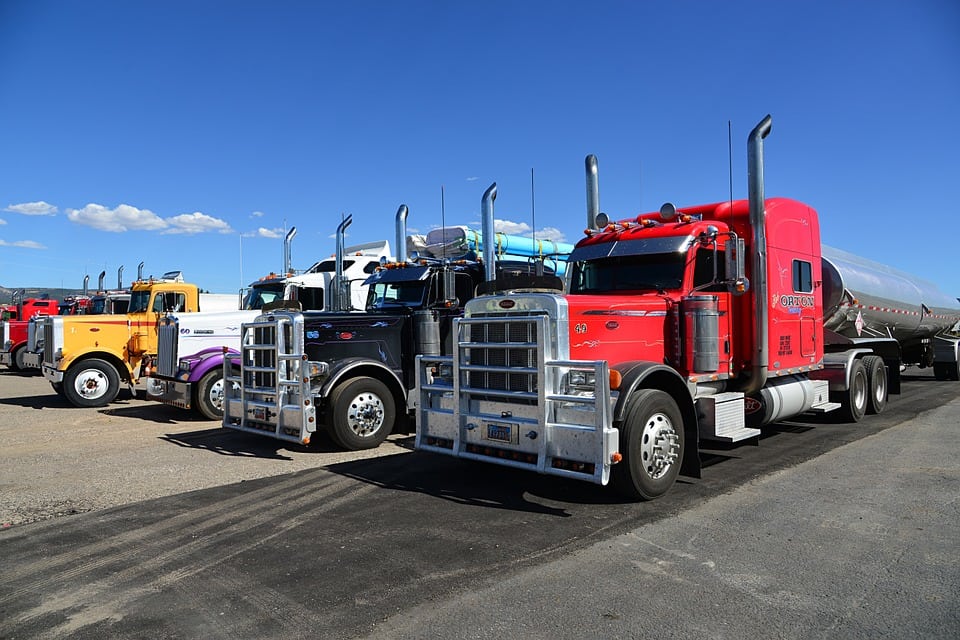“Commercial vehicles” is an umbrella term that includes any large vehicle used for vocational transport or a service. This means dump trucks, box trucks and vans, semi trucks, tractors and even fire trucks. What makes a commercial truck loan unique? Banks commonly offer auto loans for a normal car, and small business apply for loans at banks all the time. But banks usually don’t finance commercial vehicles to small businesses or owner-operators with less than perfect credit.
This means that your first step toward financing your truck or fleet of trucks is to find an agency that specializes in lending for commercial vehicles. Often, these agencies work directly with dealerships to provide financing options.
What’s the Cost?
If your goal involves putting your Commercial Driver’s License (CDL) to use as an independent driver (owner-operator), you’ll want to finance a semi-truck. New semi-trucks start at about $80,000 and run up to $150,000 dollars. However, the range in cost of semi-trucks is wide. Factors like horsepower, cargo capacity, fuel efficiency and custom features could push the price up to $200,000. However, pre-owned vehicles are commonly financed as well and are much more affordable.
Commercial vehicle financing refers to either an equipment lease or loan. When you finance a loan, this means that once your debt is paid off you own the vehicle. When you take on a lease, you make payments on the use of the vehicle for the span of your lease term instead of towards ownership. At the end of a lease, you are usually given different options between walking away from the vehicle or buying out the remaining value. Most people prefer loans so that ownership is guaranteed at the end of the term.
What vehicle you choose will depend on the routes you’ll take as a driver, fuel costs, maintenance costs and the cost of insurance. However, many lenders will finance pre-owned highway trucks up to 15 years old, so it’s not necessarily required to invest in a brand new truck. For example, a 7 year old preowned semi truck could run as little as $30,000 to $40,000 dollars. Since most people won’t have the finances to buy a truck up front, the most important questions are:
- How much your monthly payments will be as part of a financing plan
- How much your down payment will be
Your downpayment and monthly payment will generally depend on how good your credit is, how much equity you have, the truck you choose, and/or your payment history with an already established commercial vehicle loan (if you’re looking to refinance it or add another vehicle to a fleet). If you’re applying as a brand new owner-operator, this will affect your rates but is certainly not an issue.
When you’ve decided that you want to apply for a loan, there are a few main steps you’ll go through.
1) Consider Your Eligibility
You’ll be able to determine your eligibility for financing depending on a few major factors. The better your credit is, the lower your downpayment and monthly payments will likely be. Many financing servicers will work with you to find a solution even when your credit isn’t good. If you’re a new owner-operator, your down payment may be a little higher (18-27%). The age of the condition of the truck you choose will also be a factor. Additionally, outstanding serious issues with child support payments, a history of repossessed vehicles, or current bankruptcy proceedings could prevent you from qualifying for the loan as well. Outside of these exceptions, most issues involving credit and history can be worked out with your lender. There are lenders that specialize in loans for people who would have trouble attaining a commercial vehicle loan from a big bank.
Owner Operator Loan Types:
- First time owner/operator financing
- Drivers with limited experience
- Owner Operator with bad credit, bankruptcies, child support or tax liens
- Small fleets
So when you’re planning your purchase and loan, consider where you stand. Your semi truck dealer may even supply you with financing options via lenders that they work with. Keep in mind that lenders want to work with you to come to an agreement. So what’s the next move?
2) What Documents Will I Need?
Whether your working through a dealership with your lender, or the lender directly, you’re going to need a few documents to get the ball rolling. These will likely include:
- Documents proving your registered business
- Current and past bank statements (up to 1 year)
- Business tax returns (up to 3 years)
- Current year P&L for your business
- Current business balance sheet
- Any business licenses or required certifications
- Your CDL (commercial drivers license)
- US Department of Transportation Number (USDOT)
- Motor Carrier Number
3) Select Your Commercial Vehicle
Decide if you want to finance a new or preowned semi truck. You’ll probably want to select a truck under ten years old to avoid excessive maintenance costs and higher payments. However, many agencies will still finance older trucks up to 15 years old. If you’re looking for a loan for a slightly different reason, some lenders also provide loans for:
- Truck Repairs
- Operating Capital
- Loan Refinance
- Licensing and Permits
- Tire Replacements
- Lease Purchase Buy-Outs
When you’re choosing your vehicle, remember that maintenance is going to be a part of your career. Older trucks may require more frequent or more expensive repairs, and newer trucks are going to have higher price tags initially. Refinancing is also an option if you choose a pre-owned vehicle and later need cash flow for repairs.
4) Select Insurance
Make sure you plan for your insurance coverage as you work out your purchasing options for your semi truck or commercial vehicle. Commercial vehicles need different insurance than regular cars, because they endure much more wear and tear than regular cars. However, the parameters of commercial vehicle insurance are very similar. This kind of insurance still includes liability for property damage and bodily injury, collision coverage and uninsured motorist coverage. However, commercial vehicle insurance includes some features different than regular car insurance, such as coverage for loading and unloading liability. Your insurance plan may even include substitution transportation when your commercial vehicle is being repaired and you need a loaner from the repair shop. One benefit of commercial vehicle insurance coverage is that it’s actually tax deductible.
5) Submit Your Documents and Application
Submitting your application for your loan is the final step. You’ve made it through the process and are one step closer to hitting the road! Your lender will walk you through the process from there and help you set up your payments. Happy driving!




